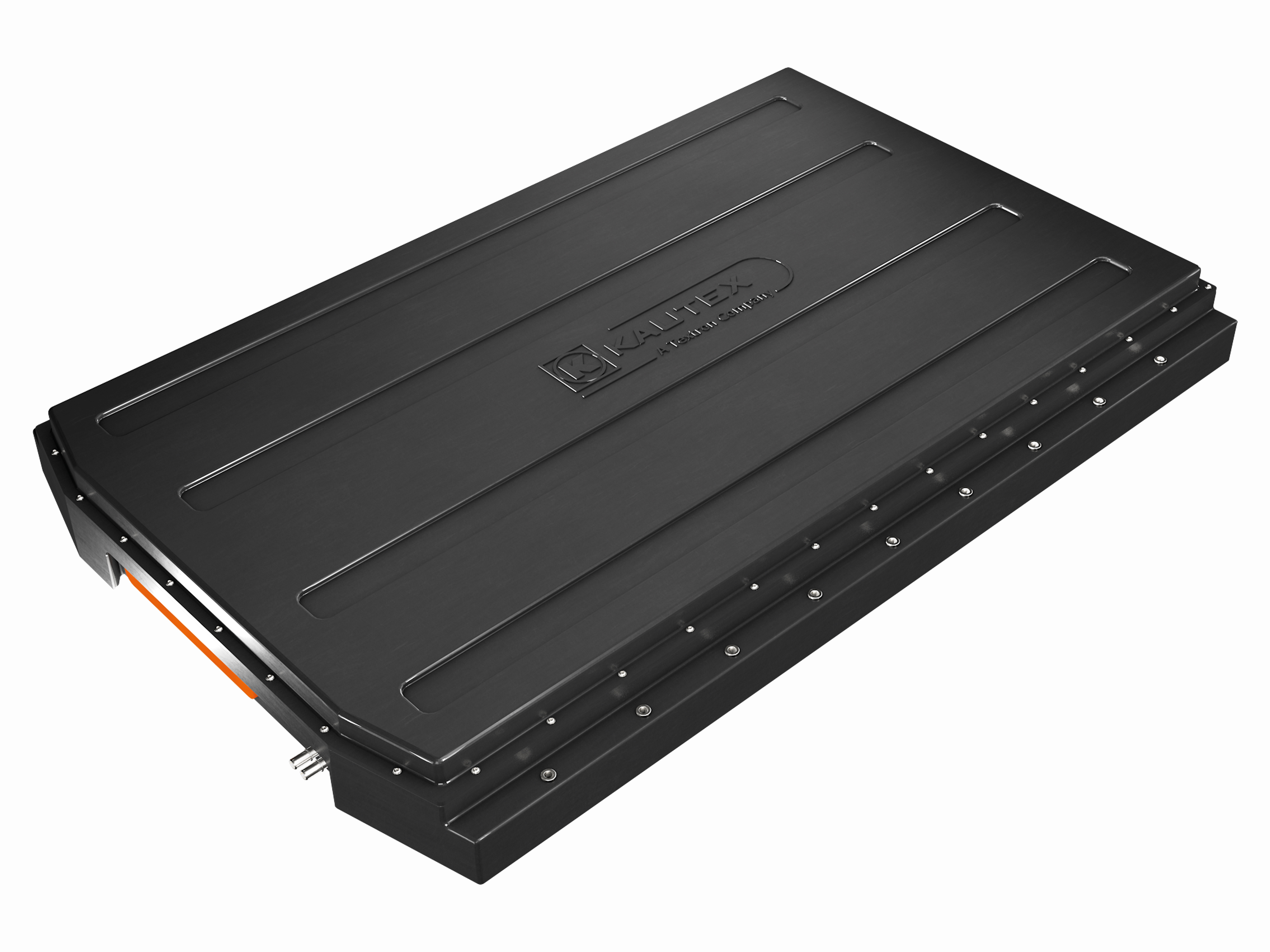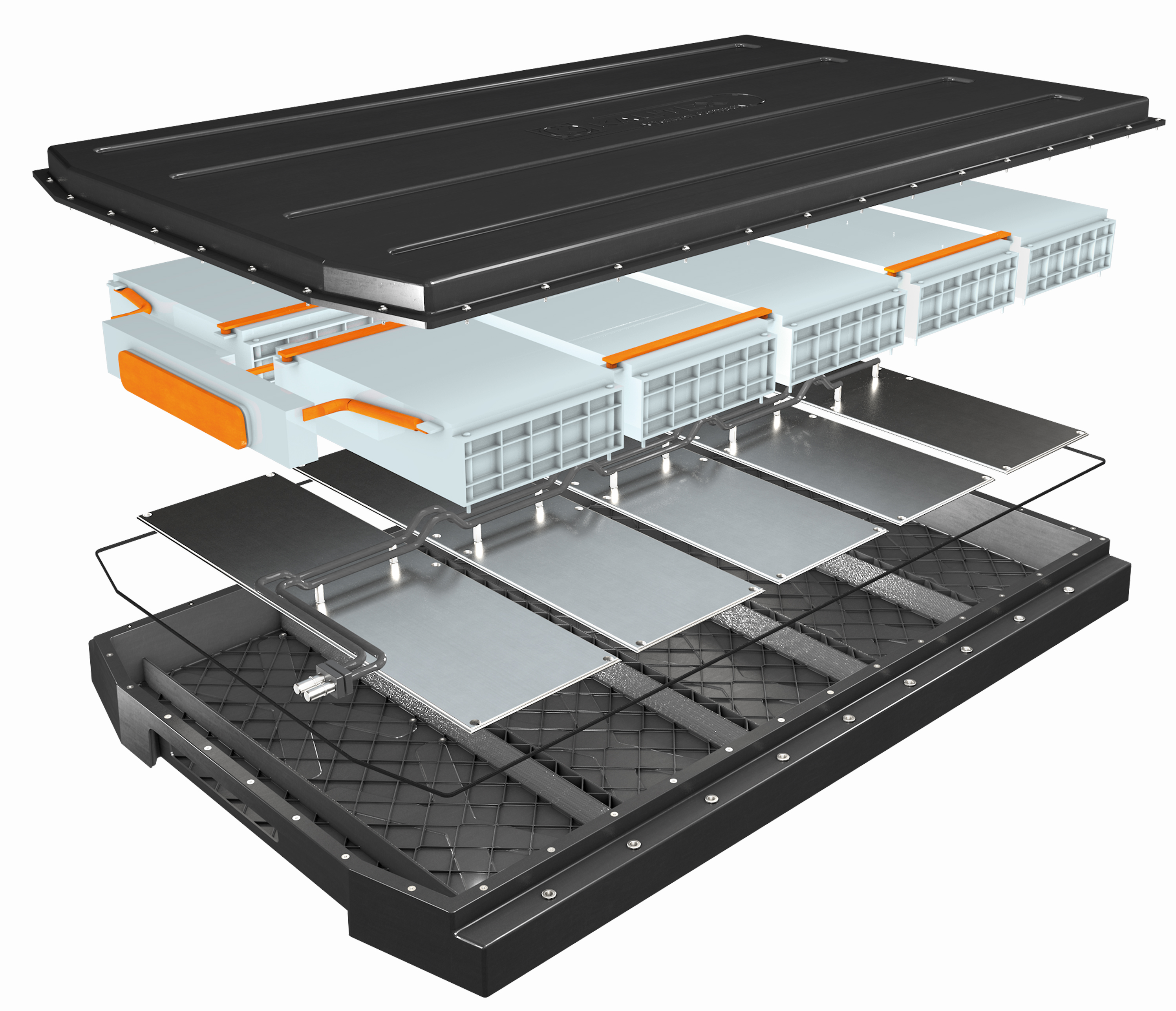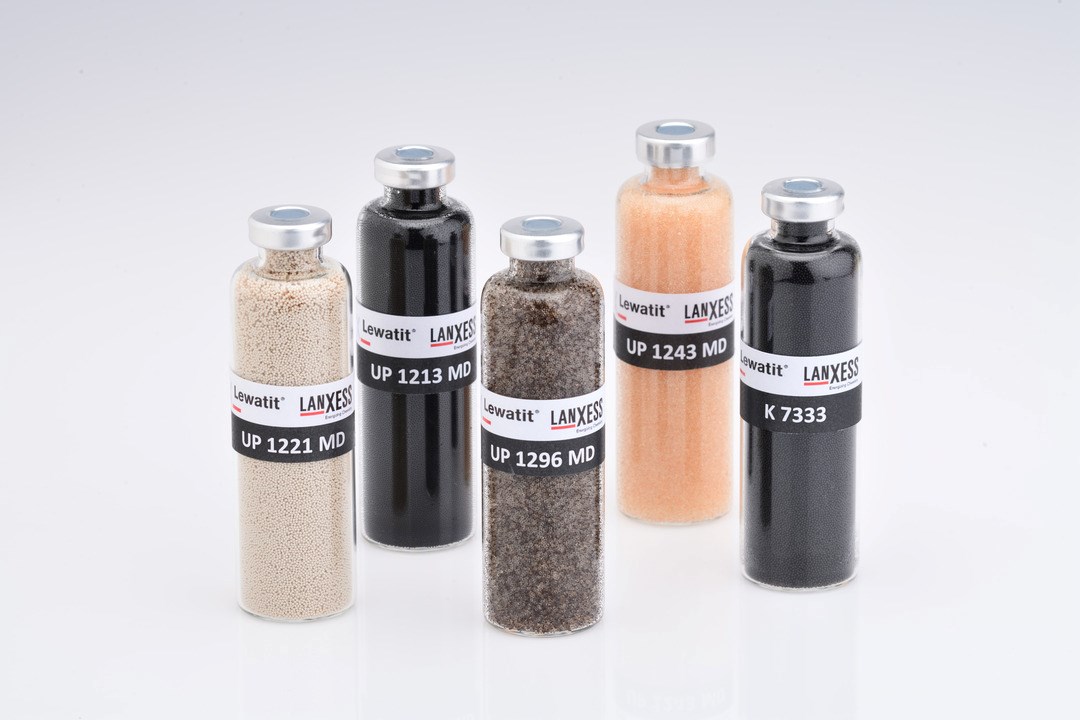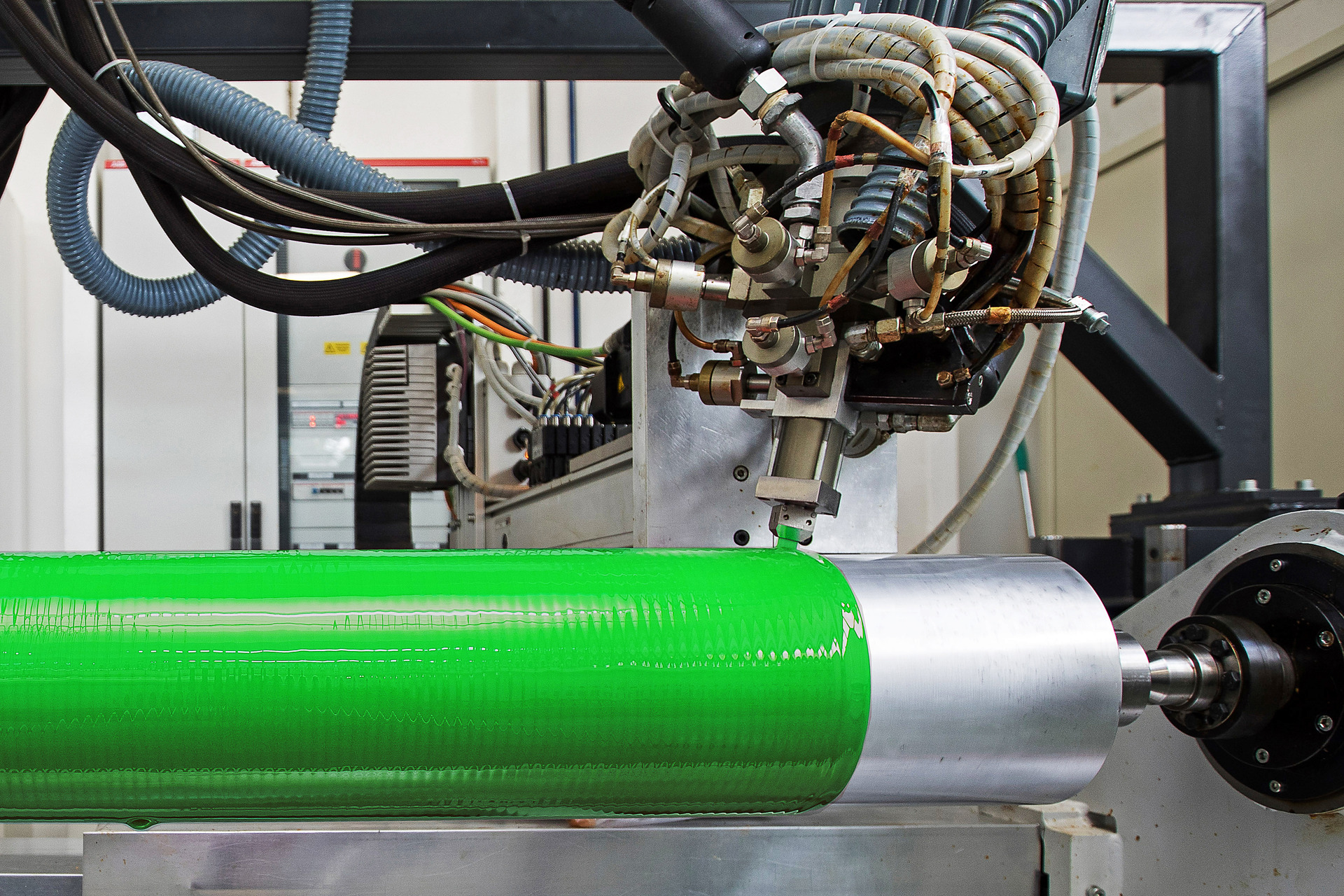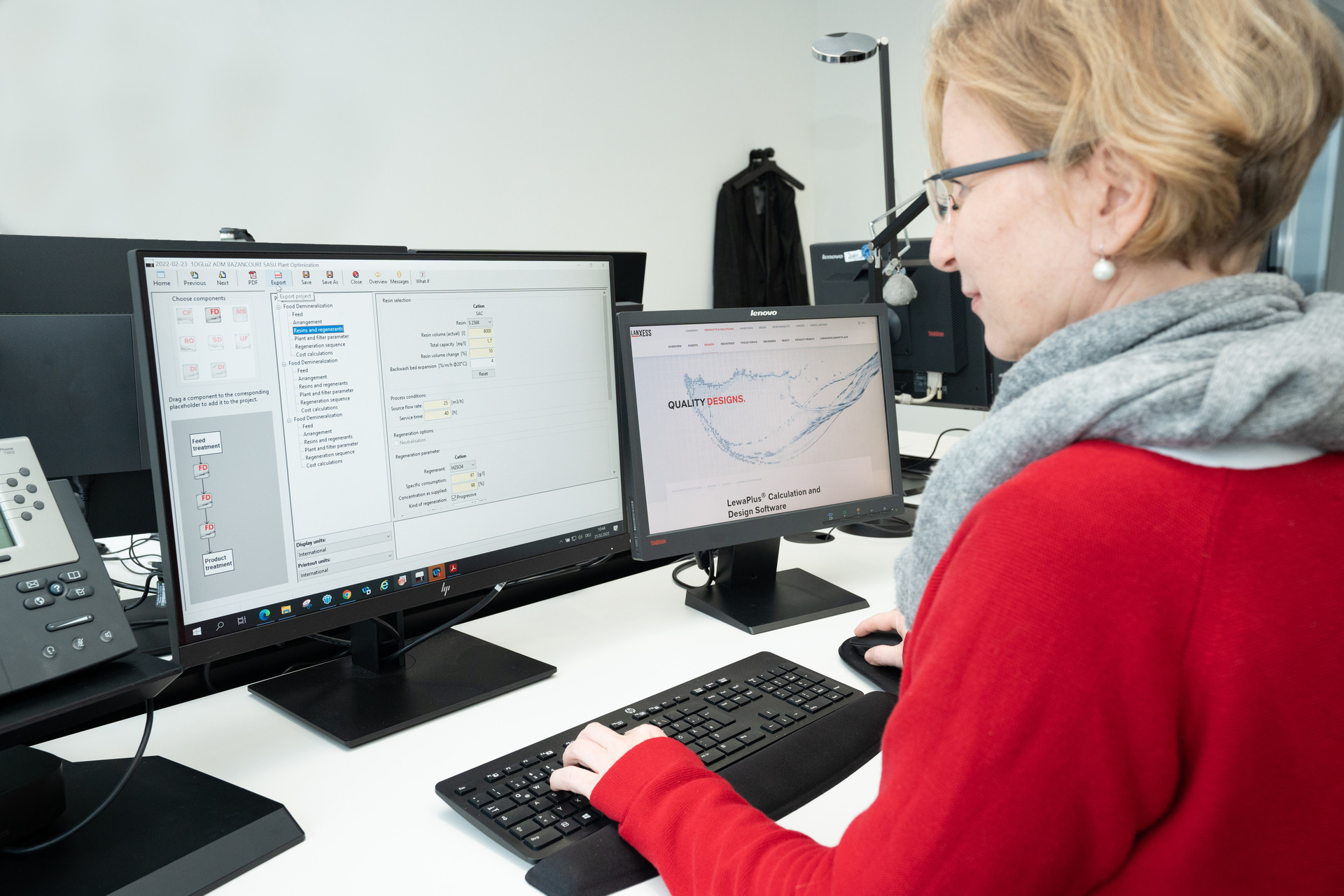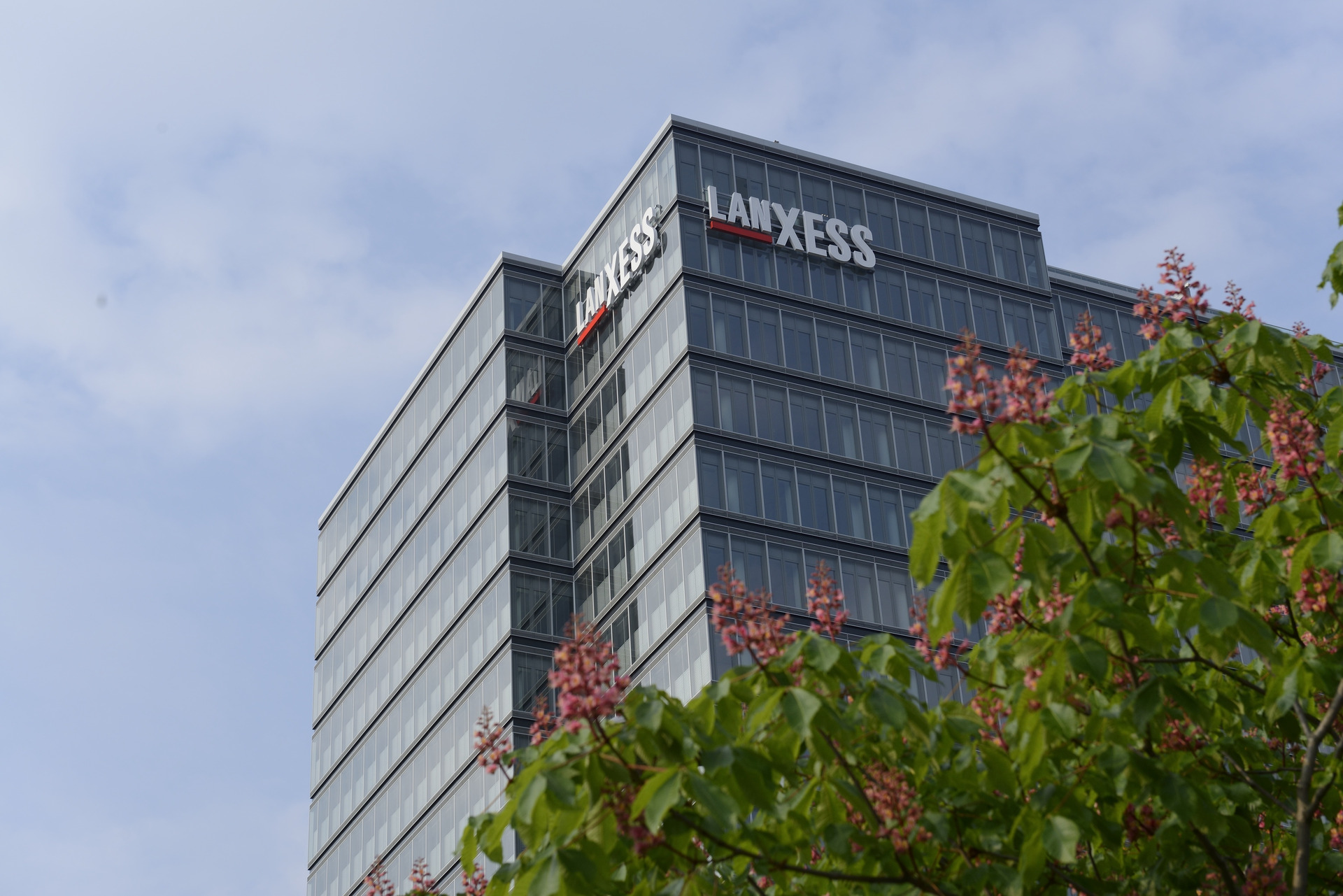Think big – large-format plastic housings for high-voltage batteries of electric vehicles
- Research cooperation between Kautex Textron and LANXESS
- Substitution of steel and aluminium
- Advantages in weight, functional integration and mass production
- Technology demonstrator as the basis for series developments
Speciality chemicals company LANXESS and Kautex Textron GmbH & Co. KG, a Textron Inc. company, have been collaborating for several years to research whether battery housings for electric vehicles can be designed and manufactured from technical thermoplastics. Together, they have developed a near-series technology demonstrator in a feasibility study. With a length and width of around 1,400 millimeters each, the system is a technically sophisticated, large-format all-plastic housing part with a weight in the mid-double-digit kilogram range.
The goal of the project was to demonstrate the advantages of thermoplastics over metals in terms of weight and cost reduction, functional integration and electrical insulation behavior.
“As a first step, we have completely dispensed with the use of metallic reinforcement structures while proving we can commercially produce these complex large components,” Felix Haas, Director Product Development at Kautex Textron, explains.
“Going forward, Kautex and LANXESS want to use the results of the cooperation to enter into development projects for series production with automotive manufacturers,” adds Dr. Christopher Hoefs, Project Manager e-Powertrain at LANXESS.
Single-stage manufacturing process with short cycle times
The demonstrator was developed based on the battery housing of a C-segment electric vehicle. It consists of a housing tray with crash structure, a housing cover and an underrun (underbody) protection. The housing components can be produced in a single-stage Direct Long Fiber Thermoplastic (D-LFT) molding process. LANXESS has optimized Durethan B24CMH2.0 as the material for the D-LFT molding compound. Kautex Textron compounds the PA6 for the process with glass fiber rovings. The local reinforcement of the housing structure is carried out using continuous fiber-reinforced thermoplastic composites of the Tepex dynalite brand from LANXESS. “The process enables shorter and thus more economical cycle times than the processes in which steel or aluminium are processed,” Haas explains.
No complex metal forming, fewer production steps
Today, housings for high-voltage batteries are primarily made of extruded steel or aluminium profiles. Depending on the vehicle class, the housing length and widths can be well over 2,000 or 1,500 millimeters, respectively. The size, the number of components and the numerous manufacturing and assembly steps make metal housings very cost-intensive. For example, complex structures made from strand press profiles require many secondary work steps such as welding, punching and riveting. In addition, the metallic components must be protected against corrosion in an additional process step by cathodic dip coating.
“Plastics, on the other hand, can fully exploit their design freedom. By integrating functions such as fasteners and thermal management components, the number of individual components of a battery housing can be greatly reduced. This simplifies assembly and logistical effort, which reduces production costs,” says Hoefs. Plastics are also corrosion-resistant and electrically insulating. The latter ensures, for example, that there is a reduced risk of the system short-circuiting. The low density of plastics and their potential for lightweight construction lead to significantly lighter housings, which benefits, among other things, the range of electric vehicles.
Complex mix of high requirements
High-voltage battery housings must meet a variety of highly demanding technical requirements. For example, they must be stiff and strong and yet be able to absorb a significant amount of energy in the event of a crash. This is tested via mechanical shock- and crush tests. The housings must also be flame-retardant in the event of a vehicle fire or thermal run-away of the electrical cells. Finally, the housings must be integrated into the vehicle structure.
“We continue to work together on optimizing the production and structural design of the components. The aim is to carry out the majority of the development work virtually, in order to save costs in prototype design and to shorten the time to market of future series components,” Hoefs says.
Further information on LANXESS products and technologies for new mobility and on Kautex Textron's battery developments can be found under https://new-mobility.lanxess.com and www.kautex.com/en/mobility/battery-systems.
About Kautex Textron GmbH & Co. KG:
At Kautex, we are driving the future. As a Tier One automotive supplier with more than 30 plants in 14 countries, Kautex designs, develops and manufactures traditional and hybrid fuel systems, advanced cleaning solutions for assisted and autonomous driving, engine camshafts and plastic industrial packaging solutions. A pioneer in the design and manufacture of automotive plastic fuel systems, Kautex is expanding its portfolio to offer smart products and data-driven services to our customers, including smart fuel systems, thermoplastic composite and composite-metal hybrid battery systems. From a lightweight battery system to a hybrid fuel system to autonomous drive vehicle cleaning systems, Kautex is committed to pioneering solutions for the era of new mobility.
About Textron Inc.
Textron Inc. (NYSE: TXT) is a multi-industry company that leverages its global network of aircraft, defense, industrial and finance businesses to provide customers with innovative solutions and services. Textron is known around the world for its powerful brands such as Bell, Cessna, Beechcraft, Hawker, Jacobsen, Kautex, Lycoming, E-Z-GO, Arctic Cat, and Textron Systems. For more information, visit: www.textron.com.
Information for editors:
All global LANXESS news releases and their accompanying photos can be found at http://press.lanxess.com.
Recent photos of the Board of Management and other LANXESS image material are available at http://photos.lanxess.com.
